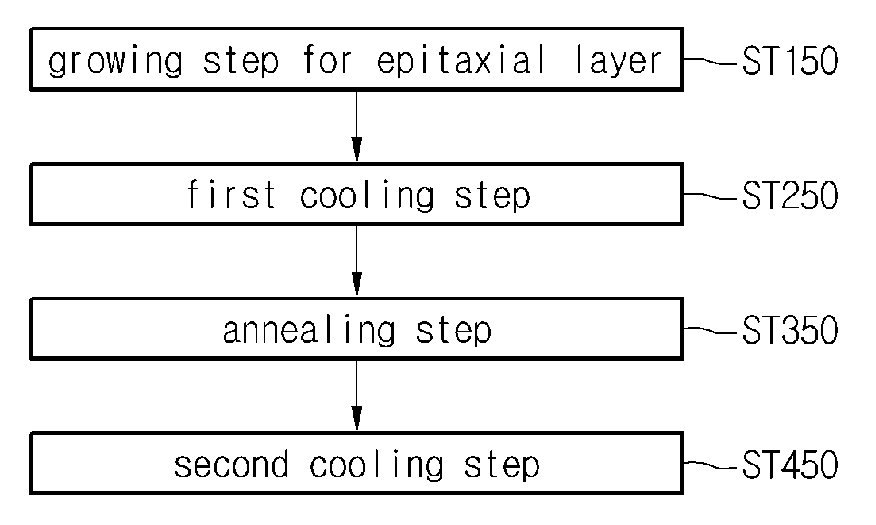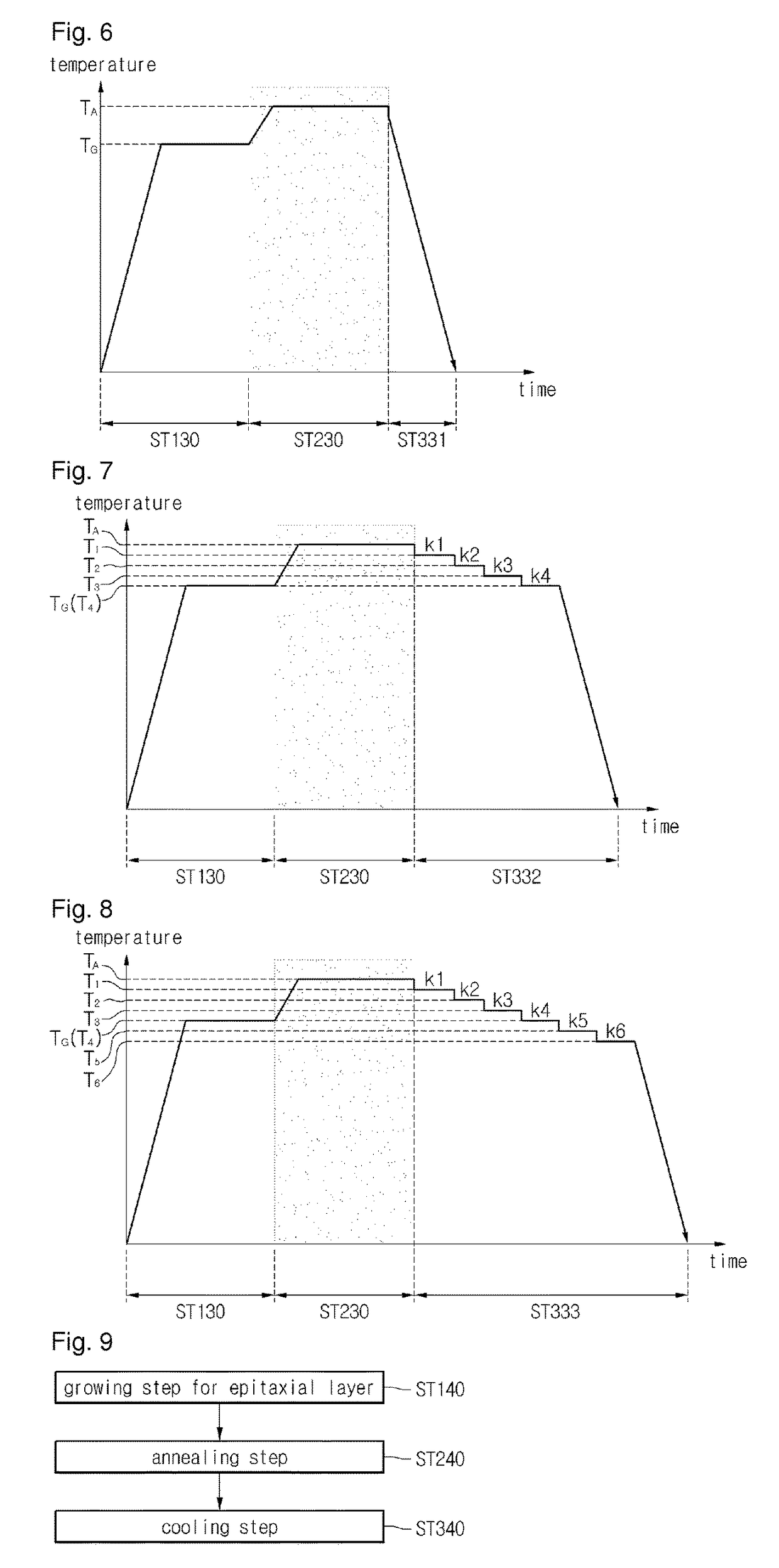Method of fabricating wafer
a technology of fabricating and wafers, applied in the direction of chemically reactive gases, crystal growth processes, after-treatment details, etc., can solve the problems of generating large leakage current, presenting various defects, and affecting the performance of the semiconductor device employing the wafer, so as to prevent defects, and reduce the risk of contamination
- Summary
- Abstract
- Description
- Claims
- Application Information
AI Technical Summary
Benefits of technology
Problems solved by technology
Method used
Image
Examples
first embodiment
[0028]Referring to FIGS. 1 and 2, the method of fabricating the wafer comprises a growing step ST100 for an wafer and a cooling step ST200.
[0029]In growing step ST100 for the wafer, the wafer may be grown on the surface of the wafer. The wafer can be formed by growing a single crystal layer including a material equal to or different from a material for the wafer on the surface of a single crystal wafer.
[0030]In general, the wafer can be formed through a chemical vapor deposition (CVD) process. Especially, the CVD process may comprise thermal CVD, plasma enhanced CVD, low-pressure CVD, metal organic CVD, and atomic layer deposition processes. These processes may be properly selected according to the characteristic of the target layer to be formed.
[0031]In the case of the CVD process, reaction gas, such as source gas, carrier gas or pressure adjusting gas, is supplied onto the wafer placed in a vacuum chamber and the wafer is formed on the wafer through the surface reaction between t...
second embodiment
[0052]Referring to FIGS. 3 and 4, the method of fabricating the wafer comprises a growing step ST120 for an wafer, a cooling step ST220 and an annealing step ST320.
[0053]In growing step ST120 for the wafer, the wafer may be grown on the surface of the wafer.
[0054]In growing step ST120 for the wafer, the wafer can be grown in a first chamber under the predetermined growth temperature TG. For instance, the growth temperature TG is in the range of 1300° C. to 1700° C.
[0055]After the wafer has been grown, the wafer is subject to cooling step ST220. In cooling step ST220, the growth temperature TG is lowered to stabilize the wafer on the wafer.
[0056]However, in cooling step ST220, the cooling rate in the wafer may not be uniform. That is, the cooling rate at the center of the wafer may be lower than the cooling rate at the outer peripheral portion of the wafer. Thus, the temperature may be slowly dropped at the center of the wafer relative to the outer peripheral portion of the wafer. I...
third embodiment
[0065]Referring to FIGS. 5 and 6, the method of fabricating the wafer comprises a growing step ST130 for an wafer, an annealing step ST230 and a cooling step ST331.
[0066]In growing step ST130 for the wafer, the wafer may be grown on the surface of the wafer.
[0067]Then, the epitaxial wafer is annealed in annealing step ST230. That is, the epitaxial wafer is heat-treated at a predetermined temperature.
[0068]Annealing step ST230 can be performed at the temperature TA higher than the growth temperature TG. In detail, the annealing temperature TA may be higher than the growth temperature TG by 100° C. to 200° C. In addition, annealing step ST230 can be performed for about 1 hour.
[0069]Annealing step ST230 can be performed under the high vacuum condition.
[0070]Annealing step ST230 can be performed in a chamber where growing step ST130 for the wafer is performed. That is, annealing step ST230 can be performed in-situ so the process time can be reduced.
[0071]The mismatch between the wafer ...
PUM
| Property | Measurement | Unit |
|---|---|---|
| angle | aaaaa | aaaaa |
| angle | aaaaa | aaaaa |
| temperature | aaaaa | aaaaa |
Abstract
Description
Claims
Application Information
 Login to View More
Login to View More - R&D
- Intellectual Property
- Life Sciences
- Materials
- Tech Scout
- Unparalleled Data Quality
- Higher Quality Content
- 60% Fewer Hallucinations
Browse by: Latest US Patents, China's latest patents, Technical Efficacy Thesaurus, Application Domain, Technology Topic, Popular Technical Reports.
© 2025 PatSnap. All rights reserved.Legal|Privacy policy|Modern Slavery Act Transparency Statement|Sitemap|About US| Contact US: help@patsnap.com



